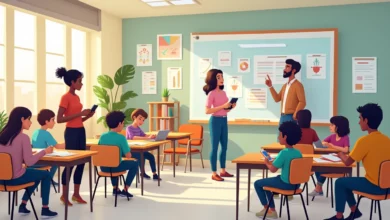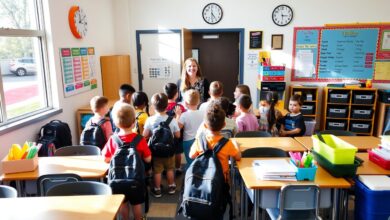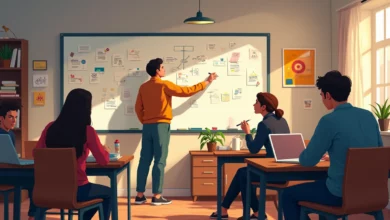Types of learning in psychology
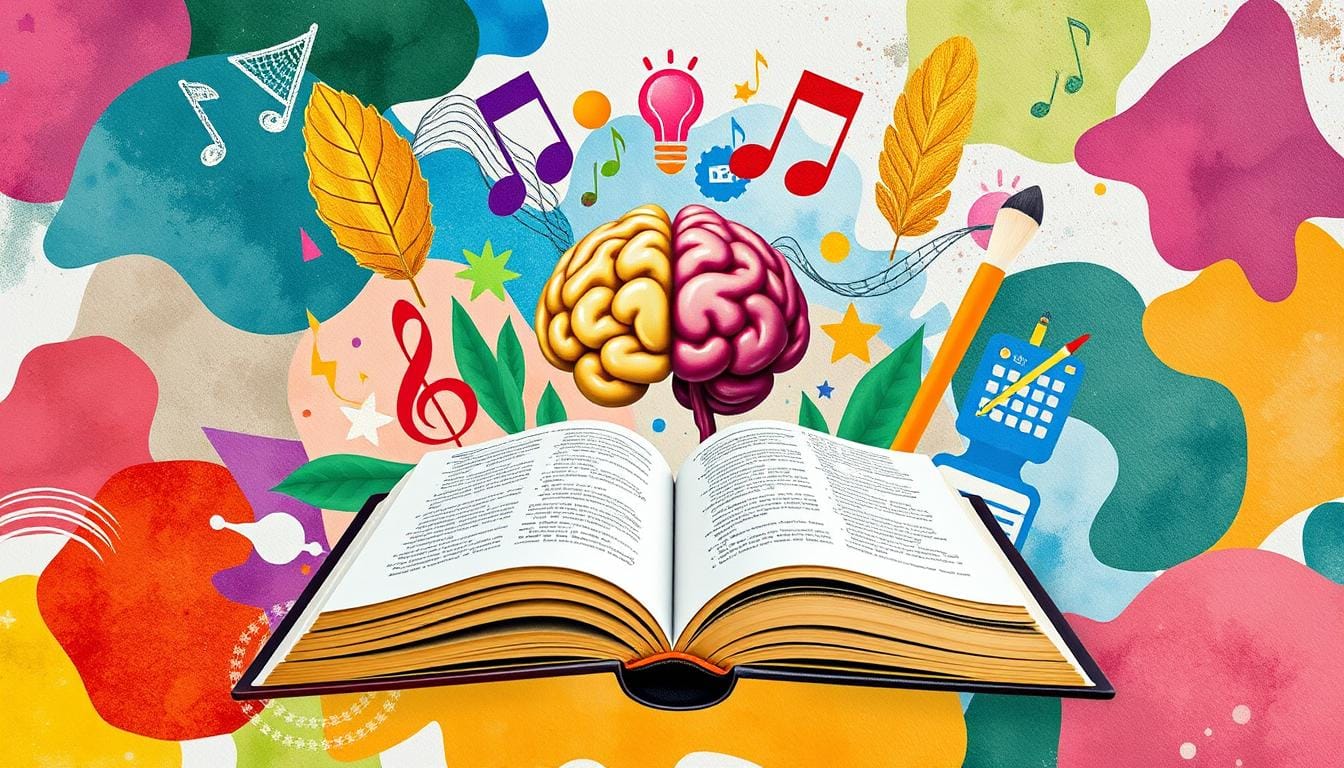
In psychology, knowing the different types of learning is key for both teachers and students. Whether you’re studying hard or teaching others, learning about learning styles can open new doors. We’ll explore the world of learning types and how they affect our ability to learn and remember.
Some people learn best by seeing things, while others prefer hearing information. Everyone has their own way of learning. By knowing your learning type, you can use your strengths and overcome learning hurdles.
We’ll dive into the world of learning psychology. We’ll look at how learning theories have evolved and the brain’s role in learning. This journey will help you understand how you or your students learn. It will empower you to make better choices and improve learning experiences.
Key Takeaways
- Learning types in psychology encompass various cognitive processes and preferences
- Understanding your learning style can unlock new opportunities for academic and personal growth
- Exploring the historical and neurological foundations of learning theories provides valuable insights
- Identifying and catering to different learning types can enhance the effectiveness of educational methods
- Recognizing the significance of learning types is crucial for both learners and educators
Understanding the Fundamentals of Learning Psychology
Learning psychology explores how our minds learn and remember things. It looks into cognitive processes, learning theories, and brain mechanisms. These help us understand the different أنواع التعلم (types of learning).
The Role of Cognitive Processes in Learning
Learning involves many cognitive functions like perception, attention, memory, and problem-solving. Knowing how these work together is key to creating good learning strategies. By studying how the brain processes information, teachers can design lessons that fit each student’s needs.
Historical Development of Learning Theories
Learning psychology has grown a lot over the years. Pioneers like Pavlov, Skinner, and Piaget helped us understand learning today. Looking at the history of learning theories shows us how ideas have changed and influenced education.
Brain Mechanisms in Different Learning Styles
Studies in neuroscience have found out how different brain mechanisms support various أنواع التعلم. For example, visual learning uses the visual cortex, while kinesthetic learning involves the motor cortex. Knowing this helps teachers tailor their teaching to fit each student’s learning style.
| Learning Style | Brain Region Activation | Optimal Learning Strategies |
|---|---|---|
| Visual | Visual cortex, occipital lobe | Graphs, diagrams, images, videos |
| Auditory | Auditory cortex, temporal lobe | Lectures, discussions, audio recordings |
| Kinesthetic | Motor cortex, cerebellum | Hands-on activities, role-playing, simulations |
التعلم البصري: Visual Learning and Its Impact
The human brain is amazing, and how we learn is very important. Visual learning is a key way we learn. It uses images, diagrams, and videos to understand information.
People who learn visually do well with quick visual tasks. They remember and understand better when they see things. This is because our brains are made to process images well.
Visual aids in school really help students learn. Studies show that visuals like charts and graphs help students remember more. Visuals make complex ideas clear and engaging for visual learners.
Also, learning styles differ a lot among people. Knowing and meeting these differences is key to better learning. Teachers can use this knowledge to teach in ways that work best for everyone.
| Characteristics of Visual Learners | Effective Visual Learning Strategies |
|---|---|
|
|
By using visual learning and good strategies, teachers can make learning fun and inclusive. This way, they meet the needs of all their students.
“The eye is the lamp of the body. So, if your eye is healthy, your whole body will be full of light.”
Auditory Learning: Processing Information Through Sound
Auditory learning is a powerful way to learn for those who love sound. It’s also known as التعلم السمعي or sound-based learning. This method uses the strengths of those who learn best by listening and using sound.
Benefits of Auditory Learning Methods
Auditory learners have a big advantage in learning. They do well in many areas, like:
- Effective listening skills and following verbal instructions
- Remembering spoken lectures, presentations, and audio recordings well
- Being good at languages, public speaking, and oral discussions
- Understanding complex ideas better through conversations
Effective Strategies for Auditory Learners
To make the most of auditory learning, learners can use certain strategies. These strategies match their learning style:
- Join in discussions, ask questions, and talk with others
- Use audio recordings, podcasts, and music to help learn
- Look for chances to share information orally or explain it out loud
- Work with others in group discussions and learning activities
Common Challenges and Solutions
While auditory learning has many benefits, it can also have challenges. These challenges include:
| Challenge | Solution |
|---|---|
| Hard to stay focused during silent study or reading | Use background music or white noise to make learning more interesting |
| Struggles with written tasks or note-taking | Try voice recordings, verbal presentations, or sharing notes with others |
| Easy to get distracted in noisy or crowded places | Find quiet spots or use noise-cancelling headphones to block out distractions |
Knowing the strengths and challenges of auditory learning helps learners. They can then create strategies to improve their learning. This way, they can do well in school and work.
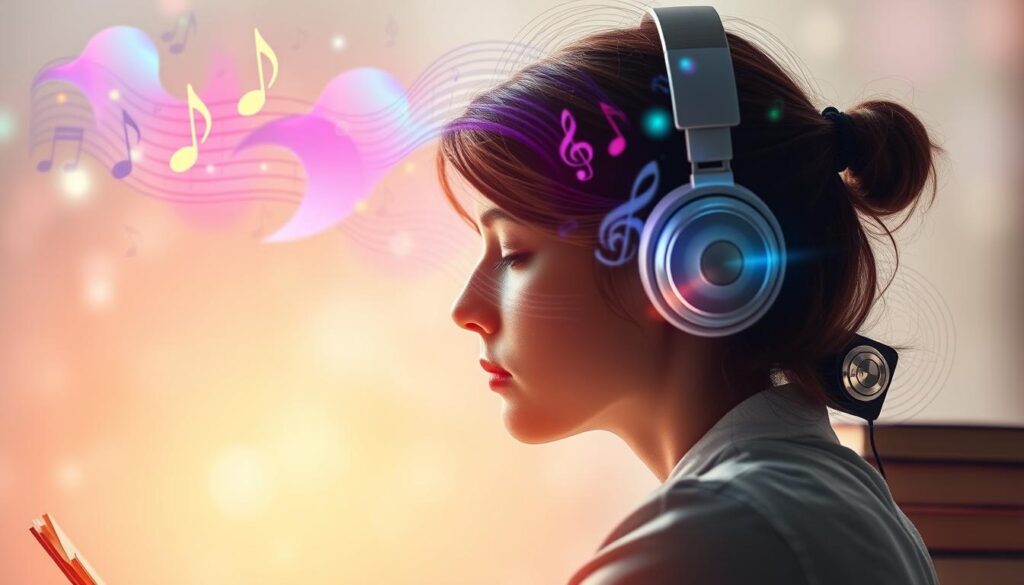
Kinesthetic Learning: Understanding Through Movement
Kinesthetic learning is a special way to learn that uses movement and hands-on activities. People who learn this way, called tactile learners, do best when they can use their bodies and senses. This helps them understand and remember things better.
This learning style believes that physical activity and interaction with the environment can enhance the learning process. Learners who prefer this style do well in activities like science experiments, art projects, or role-playing. They get to actively take part in their learning.
Kinesthetic learners love hands-on learning. They enjoy working with objects, watching demonstrations, and moving while they study. This way, they can grasp and remember information more easily.
- Kinesthetic learners benefit from opportunities to touch, feel, and interact with the subject matter.
- They often excel in hands-on learning activities, such as building models, conducting experiments, or participating in simulations.
- Kinesthetic learners thrive when they can physically experience the concepts they are learning, rather than simply reading or listening.
Teachers who understand التعلم الحركي (kinesthetic learning) make sure to include physical activity and hands-on learning in their lessons. This way, they meet the needs of kinesthetic learners. It makes learning more fun and inclusive for everyone.
“Kinesthetic learning allows students to actively engage with the material, which can lead to better retention and understanding of the concepts.”
أنواع التعلم: Comprehensive Overview of Learning Styles
Knowing your learning style is key to doing well in school. Whether you learn best through seeing, hearing, or doing, knowing your style helps you study better. This can make you do better in school.
Individual Learning Preferences
Everyone learns differently. Some people get it best from pictures and videos. Others learn more from listening to lectures. And some learn by doing things themselves.
Assessment Methods for Learning Types
| Learning Style | Assessment Methods |
|---|---|
| Visual |
|
| Auditory |
|
| Kinesthetic |
|
Adapting Teaching Methods to Learning Styles
Good teachers know how to reach all kinds of learners. They use pictures, talks, and hands-on activities. This way, everyone can learn and grow in school.
“The key to unlocking academic potential lies in understanding and addressing individual learning preferences.”
Digital Learning in Modern Education
Today, technology plays a big role in education. The idea of التعلم الرقمي, or digital learning, has changed how students learn. It makes learning more fun, interactive, and tailored to each student.
E-learning is great because it fits different learning styles. It uses many types of media, like videos and online tests. This helps teachers teach in ways that work best for each student.
Embracing the Digital Frontier
Technology has brought many tools into classrooms. These include online systems and virtual reality. They make learning more real and fun.
But, using these tools is not easy. Schools must plan well and keep learning. They need to be ready for the changes in education.
| Advantages of Digital Learning | Challenges of Digital Learning |
|---|---|
|
|
Digital learning is key to the future of education. Schools can use technology to help students succeed. This prepares them for the 21st century.
“The future of education is digital, and the time to embrace this transformation is now.”
Collaborative Learning Approaches and Benefits
In today’s education, collaborative learning is changing the game. It brings students together, making them work as a team. This way, they share ideas and learn more together.
Group Dynamics in Learning
Collaboration teaches students to work well together. They learn to talk clearly, solve problems, and make decisions. These skills are key for success in the 21st century.
Tools for Effective Collaboration
- Online collaboration platforms: Help teams brainstorm and share documents online.
- Project management tools: Keep track of tasks and deadlines.
- Communication apps: Make it easy to share ideas and feedback.
Measuring Collaborative Success
It’s important to know if collaborative learning is working. Teachers use peer evaluations, group presentations, and performance-based assessments. These help see if students are improving their teamwork and communication skills.
“Collaboration is the essence of life. The wind, bees, and flowers work together, and we shouldn’t be any different. If we lose our connection to each other, we lose something vital to our humanity.” – John Wooden
By using collaborative learning, teachers can make learning exciting. They create environments where students can grow together. This helps students succeed in school and beyond.
Practical Applications in Educational Settings
In educational settings, different learning types are key to better learning. Teachers who use practical learning and applied learning meet students’ needs. This makes learning more fun and effective.
Visual learning uses infographics and multimedia to help students understand complex ideas. Auditory learning methods like lectures and audio recordings work well for those who learn by listening.
Kinesthetic learners do best with hands-on activities. These experiences help them grasp concepts better and enjoy learning more.
Digital platforms and group work also enhance learning. They make education more engaging and diverse. This approach helps students learn in ways that suit them best.
Using practical learning and applied learning in educational settings boosts student engagement and grades. It also teaches skills that are useful in real life.
| Learning Type | Practical Application | Benefits |
|---|---|---|
| Visual Learning | Infographics, diagrams, multimedia presentations | Improved comprehension and information retention |
| Auditory Learning | Lectures, discussions, audio recordings | Enhanced aural processing and engagement |
| Kinesthetic Learning | Hands-on activities, simulations, experiential learning | Deeper understanding and skill development |
| Digital and Collaborative Learning | Online platforms, group projects, discussions | Engagement, technology integration, and teamwork skills |
By using practical learning strategies, teachers can make learning exciting. This approach meets students’ needs and helps them learn better. It also prepares them for the real world.
Integrating Multiple Learning Styles for Optimal Results
Using different learning styles is a new way to learn better. Integrated learning and multi-modal learning help students reach their full potential. This method meets each student’s unique learning needs, making learning fun and engaging.
Learning in many ways helps students remember and understand better. When students see, hear, and do things, they learn more. This leads to better grades and a deeper understanding of what they’re studying.
- Engaging Visual Stimuli: Visual aids like infographics and diagrams help visual learners. They make important ideas clear.
- Auditory Reinforcement: Audio recordings and discussions help learners who prefer sound. They get to hear and talk about what they’re learning.
- Kinesthetic Experiences: Hands-on activities and interactive learning suit kinesthetic learners. They learn by doing and exploring.
Teachers who mix these learning styles create a lively and welcoming classroom. This approach boosts success and makes learning exciting. It helps students love what they’re studying and get more involved.
“The secret of education lies in respecting the pupil. It is not to force him against his nature, but to guide and direct him with kindness, patience, and method into the right channel.” – Maria Montessori
Using integrated learning, multi-modal learning, and learning optimization is a smart way to improve education. It lets teachers inspire and empower students. This way, students can grow both academically and personally.
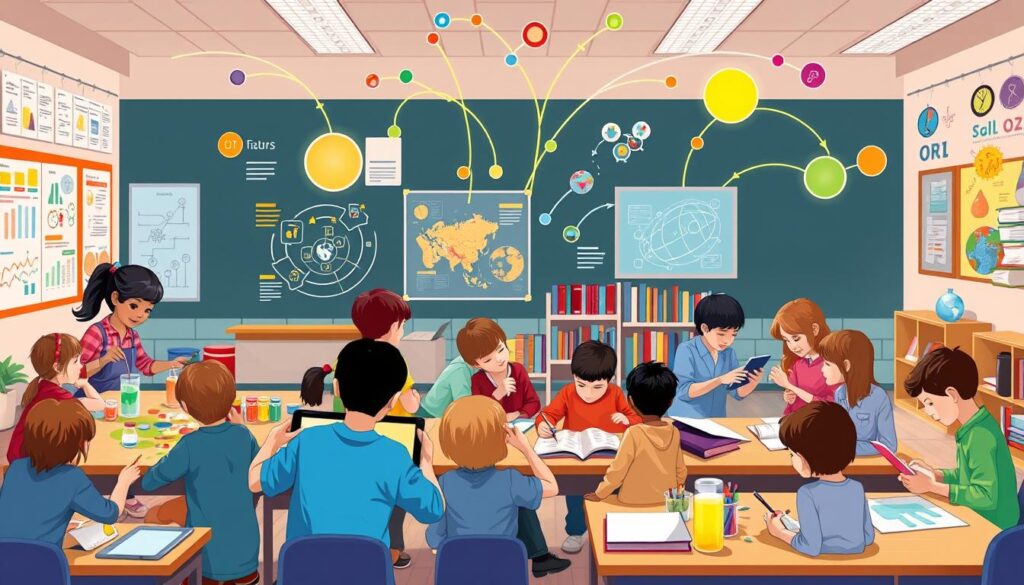
Conclusion
Exploring the different أنواع التعلم (learning types) in educational psychology shows us how vital it is. It helps us understand how people learn and grow. We’ve seen how visual, auditory, and kinesthetic learning styles work, along with digital and collaborative methods.
Knowing your own learning types helps you learn better. It’s true for both students and teachers. This knowledge can make your learning journey more effective.
The world of educational psychology is always changing. Embracing the variety of learning types is key. By staying updated, you can improve your learning and help others do the same.
FAQ
What are the different types of learning in psychology?
Psychology recognizes several learning types. These include visual, auditory, kinesthetic, and reading/writing learning. There’s also practical, collaborative, and digital learning.
What is visual learning and how does it impact the learning process?
Visual learning uses visual cues to process information. People who learn this way do well with diagrams, images, and videos. It helps them remember and understand better.
How does auditory learning differ from other learning styles?
Auditory learning uses sound to understand information. Learners who prefer this style enjoy listening to lectures and podcasts. They remember verbal instructions well and learn through discussions.
What is the significance of kinesthetic learning in the educational context?
Kinesthetic learning involves hands-on experiences. It helps learners understand by doing. This style is great for learning practical skills and motor skills.
How can teachers adapt their teaching methods to accommodate different learning styles?
Teachers should use various methods to reach all learners. This includes visual aids, audio materials, and hands-on activities. By doing this, they ensure all students can learn and grow.
What are the benefits of collaborative learning approaches?
Collaborative learning promotes teamwork and communication. It helps students understand subjects better by working together. They also develop important social skills.
How can digital learning impact the way students acquire knowledge?
Digital learning uses technology to change education. It offers online resources and interactive content. This makes learning more engaging and accessible, especially for different learning styles.
What are the practical applications of learning types in educational settings?
Knowing about learning types helps teachers plan better lessons. They can use different approaches to engage students and meet their needs. This improves learning outcomes.
How can integrating multiple learning styles lead to optimal learning results?
Using various learning styles can greatly benefit students. It makes learning more comprehensive and engaging. This approach enhances retention and problem-solving skills, leading to better learning results.
